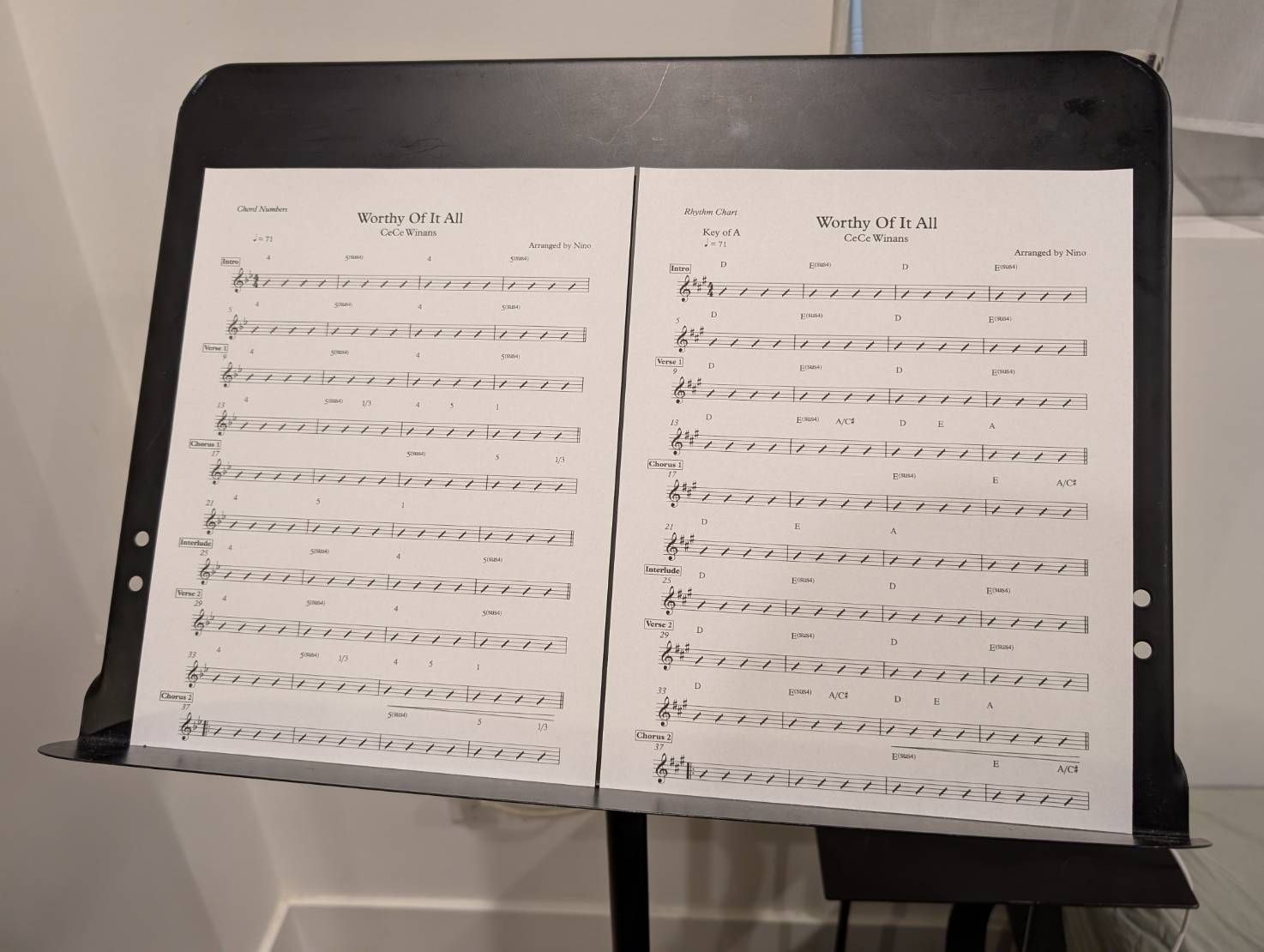Ever had to play a new song on the spot or deal with last-minute changes? The right sheet music can make all the difference! Let’s talk about two must-have tools: Rhythm Charts and Chord Number Charts.

What’s a Rhythm Chart? Think of a Rhythm Chart as your song’s roadmap. It’s designed to keep everyone on the same page and ensure you’re playing the song exactly as intended. Unlike basic chord charts that just show the chords and lyrics, a Rhythm Chart gives you the song’s full structure—beats, hits, and any special timing or changes. So, if a song has an odd number of bars or switches to a different time signature, it’s all there for you to follow.
The best part? You get to write in your own phrases and notes on the chart. Plus, it’s filled with measure numbers and rehearsal marks, so you’ll always know exactly where you are in the song. This makes it super easy to communicate with your band or fellow musicians, whether you’re in rehearsal or playing live.
I’ve designed this chart to fit perfectly on a two-page spread, with each section neatly divided into 4-bar chunks for easy reading.
When you have a Rhythm Chart, rehearsals are quicker, and if there’s a sudden setlist change, you’ll be ready to play it on the spot—no stress!

The Magic of Chord Number Charts Now, let’s talk about Chord Number Charts. This is a total game-changer, especially for worship or jam sessions where key changes happen all the time. Instead of memorizing a bunch of chord names, Chord Number Charts use the Nashville Number System. This system lets you represent every chord by its degree in the scale. So, for example, in the key of C:
C is 1Maj, Dm is 2m, Em is 3m, F is 4Maj, G is 5, Am is 6m, and Bm7b5 is 7m7b5.
Here’s a table for easy reference:
Key 1Maj 2m 3m 4Maj 5 6m 7m7b5 C C Dm Em F G Am Bm7b5 D D Em F#m G A Bm C#m7b5 E E F#m G#m A B C#m D#m7b5 F F Gm Am Bb C Dm Em7b5 G G Am Bm C D Em F#m7b5 A A Bm C#m D E F#m G#m7b5 B B C#m D#m E F# G#m A#m7b5 Sometimes the numbers are called only initial number. So 1 major is “ONE”, 2 minor is “Two”, 7m7b5 is “SEVEN”.
This works for any key, so once you get the hang of it, you’ll be able to communicate with any musician, no matter what key they’re playing in.
I know it might sound a bit tricky at first, but once you’ve learned it, you’ll wonder how you ever played without it! It’s the perfect tool for handling sudden setlist or key changes, which happens all the time in worship settings.
Download Your Sample Chart! I want you to experience how helpful these charts can be, so I’ve got a sample chart ready for you to download. Free Sample Rhythm Chart, Chord Numbers and MORE!
If you have any questions or want a video tutorial, drop a comment below—I’d love to help! Let’s make music easier and more fun together!
